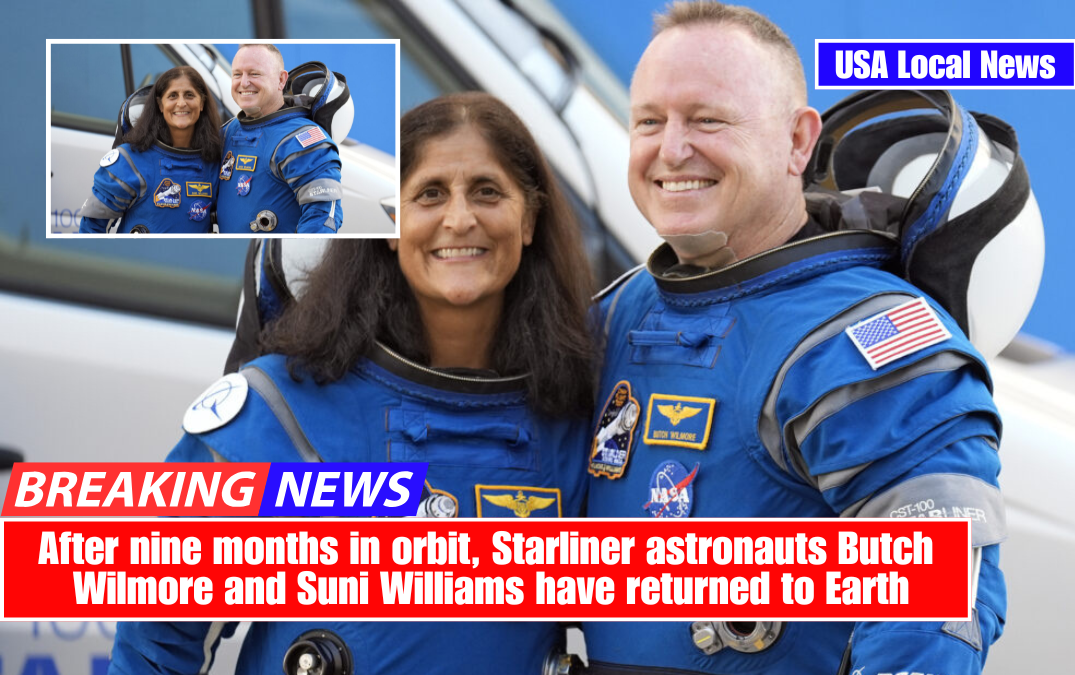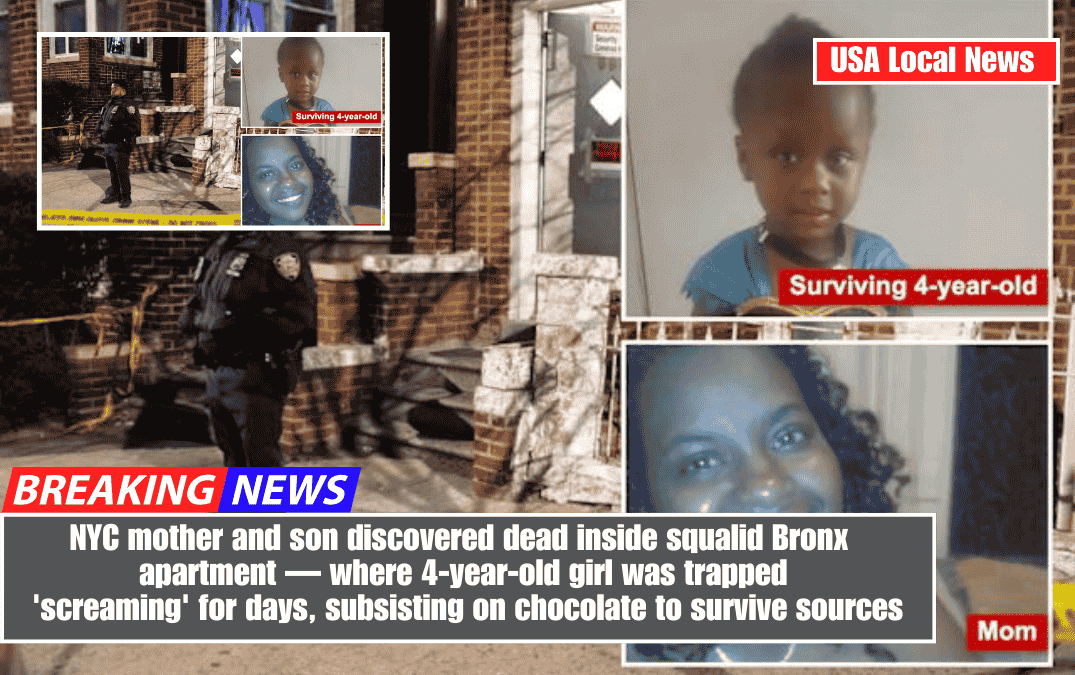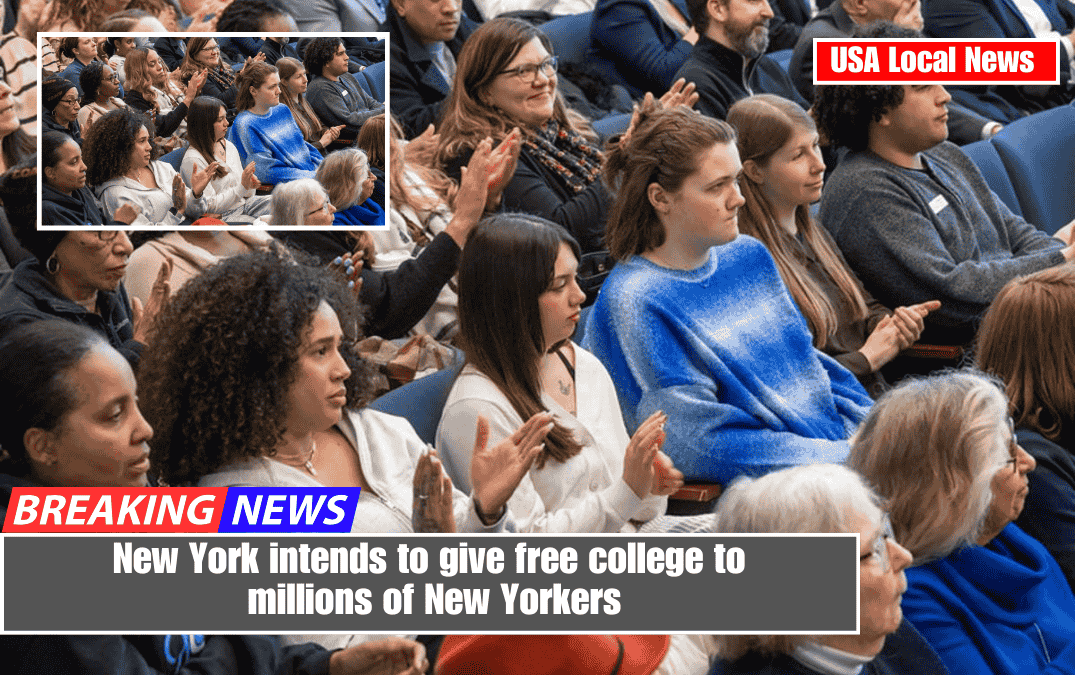Astronauts Suni Williams and Butch Wilmore, who were stranded at the International Space Station for nine months after being forced to abandon their Boeing Starliner due to thruster issues, successfully splashed down Tuesday at 5:57 p.m. EDT off the Florida Gulf Coast under sunny, blue skies.
The two Starliner astronauts travelled more than 17 hours from the International Space Station aboard SpaceX Dragon, alongside Crew-9 members NASA astronaut Nick Hague and Russian cosmonaut Aleksandr Gorbunov, who had spent the previous six months at the station.
“Splashdown of Dragon confirmed — welcome back to Earth, Nick, Suni, Butch and Aleks!” SpaceX wrote in a post at splashdown on Tuesday, along with a video of the capsule floating down under parachutes into the Gulf.
Dragon Splashdown has been confirmed; Nick, Suni, Butch, and Aleks, welcome back to Earth! pic.twitter.com/M4RZ6UYsQ2 — SpaceX (@SpaceX), March 18, 2025
At 6:38 p.m. EDT, recovery personnel opened the Dragon capsule, which had been hoisted aboard the recovery vessel. They greeted the astronauts, who “egressed” or left about ten minutes later.
We are getting our first look at #Crew9 since they returned to Earth! Recovery teams will now assist the crew out of Dragon, a standard procedure for all crew members returning from long-duration missions. pic.twitter.com/yD2KVUHSuq — NASA (@NASA). March 18, 2025
Crew-9 Commander Hague was the first to leave the capsule, followed by Gorbunov. Both were placed on stretchers to be examined by medical personnel. NASA astronaut Williams was the next to leave, smiling and waving to the recovery crews, followed by Wilmore, who gave a big thumbs up.
“It is great to have Crew-9 home. “Just a beautiful landing,” said Joel Montalbano, deputy associate administrator of NASA’s Space Operations Mission Directorate, during a post-splashdown news briefing.
“Back in January, the president asked SpaceX what it would take to bring this crew home and I will tell you at the time that that question was asked, we were already looking at options,” Montalbano recounted.
“The International Space Station program, the commercial group program and SpaceX came up with the plan that we just witnessed,” according to him. “On behalf of NASA, I want to thank the administration, I want to thank all the NASA teams and all the work of the SpaceX teams.”
Steve Stich, manager of NASA’s Commercial Crew Program, stated that the timeline was moved to Tuesday to coincide with better weather for a “really clean undocking, reentry, and landing.”
“That was incredible. Clear skies, low winds (perhaps three or four knots), and calm seas. “You could see the dolphins swimming around the capsule, which was really incredible,” Stich said, adding that the Dragon vehicle “performed very well.”
“It is great to have Crew-9 and the Freedom capsule back home, and their fourth flight is now in history. Of course, we are overjoyed. I watched every crew member exit the capsule after landing, including Nick, Suni, Butch, and Aleksandr, who smiled and waved. “They are on the ship now and we will get them back to meet the NASA aircraft and back to meet with their families.”
The SpaceX Dragon capsule flew “autonomously” just before 6 p.m. EDT, before drogue parachutes deployed at 18,000 feet slowed its speed to 119 mph. Minutes later, the spacecraft splashed down safely.
The drogue and main parachutes have been deployed (pic). twitter.com/X0wiXqFaPt — SpaceX (@SpaceX), March 18, 2025
“And splash down! Crew-9 is back on Earth! The call from mission control, “Butch and Suni, on behalf of SpaceX, welcome home!” elicited loud cheers.
Following the splashdown, the SpaceX recovery team sped on boats towards SpaceX Dragon, while jet-skis picked up the parachutes from the mostly calm gulf. As recovery workers prepared to pull the capsule from the water, they noticed a pod of dolphins swimming around it.
At 6:24 p.m. EDT, SpaceX Dragon was hoisted from the water and transferred to the recovery vessel. It took some extra steps to reposition it so that the crew could exit and be examined by doctors onboard.
Williams, Wilmore, Hague, and Gorbunov descended from the International Space Station early Tuesday morning after performing a series of leak inspections to ensure the safety of the spacecraft and their spacesuits.
The crew splashed down one day earlier than NASA had planned due to “favourable conditions forecast for the evening of Tuesday,” according to the space agency, which expressed concerns about weather later this week.
On June 5, Williams and Wilmore launched the first crewed test flight of Starliner, which Boeing hoped would become NASA’s second vehicle. They planned to stay at the ISS for only eight days before returning to Earth.
As Starliner approached the space station, five of the capsule’s thrusters malfunctioned, delaying docking. Helium leaks were also found in the Starliner’s propulsion system. NASA returned Starliner to Earth unmanned in September, deeming it too dangerous to transport astronauts.
On Sunday, SpaceX Dragon docked with Crew-10 NASA astronauts Anne McClain and Nichole Ayers, Japan Aerospace Exploration Agency astronaut Takuya Onishi, and Roscosmos cosmonaut Kirill Peskov for a six-month mission to conduct science experiments.
Williams and Wilmore spent 286 days in space, one of the longest single space missions in NASA history. Astronaut Frank Rubio holds the longest record, at 371 days.
During her time on the ISS, Williams completed two spacewalks, bringing her total number of spacewalk hours to over 62. This is a new NASA record for a woman’s total spacewalking time. This was her third visit to the International Space Station.
Wilmore was part of Expedition 41 to the International Space Station in 2014. It was his second visit to the space station.
Williams and Wilmore have repeatedly stated that they were not “stranded” in space, but found their extended stay on the ISS “interesting.”
“Every day is interesting because we are up in space and it is a lot of fun,” Williams informed us.
NASA announced Tuesday that it will celebrate Crew-9’s successful splashdown as it moves forward with plans to launch Crew-11 as early as mid-July.
“We will work hand-in-hand with Boeing as well on certification of Starliner, getting that vehicle back to flight,” according to Stich.
“Butch and Suni’s return on Dragon shows how important it is to have two different crew transportation systems.”















